‘More than a day to bore through 10cm of rock’: Making Stage 2 of the Thomson-East Coast Line a reality
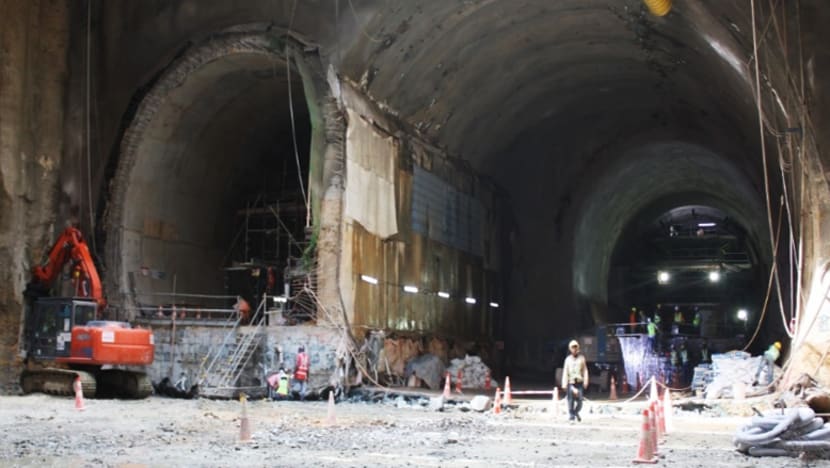
The upcoming Caldecott station on the Thomson-East Coast Line features Singapore's largest mined tunnels, constructed in mixed soil condition. Each tunnel has a height of 13m high, a width of 23m and is 62m long. (Photo: Land Transport Authority)
SINGAPORE: Tunnelling through hard granite, working around major utilities and conducting construction work just metres away from homes: These were just some of the challenges faced by the Land Transport Authority (LTA) during construction of the Thomson-East Coast Line’s second stage.
Comprising six MRT stations - Springleaf, Lentor, Mayflower, Bright Hill, Upper Thomson and Caldecott – Stage 2 of the Thomson-East Coast Line is scheduled to open on Aug 28.
On Thursday (Aug 12), LTA engineers revealed some of the challenges they faced during construction along the 13km stretch.
For the Springleaf station, works were carried out just 7m away from shophouses along Upper Thomson Road, said LTA deputy project manager Goh Heng Tak.
“Due to the close proximity of Springleaf station to the shophouses at Thong Soon Estate, we had to ensure that the structural integrity of the shophouses was protected during construction of the station,” said Mr Goh.
To prevent damage to the shophouses, an earth retaining stabilising structure - a structural system used to maintain the shape of excavation during construction works - was constructed to prevent movement of the ground.
The structure was equipped with instruments that monitored its performance, Mr Goh added.
Working in close quarters with the surrounding shophouses also meant cranes and other heavy machinery had limited space to manoeuvre. As such, they had to be positioned in a way that would minimise damage should they topple over, with any movement restricted to within the boundaries of the worksite.
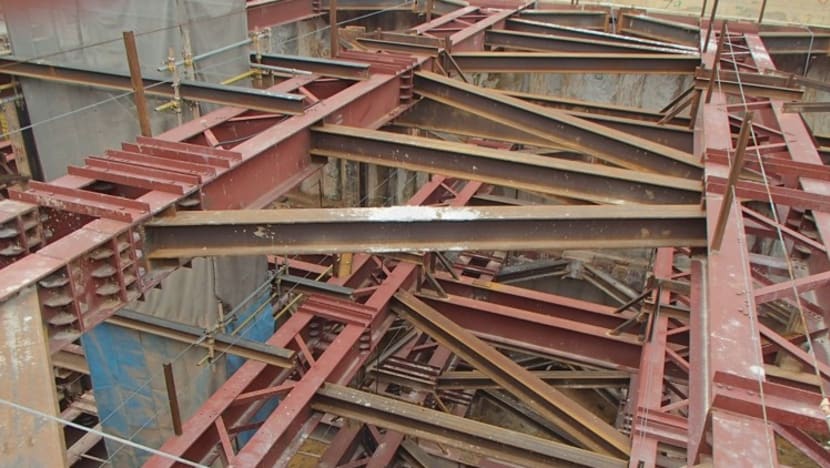
In the case of Bright Hill station, the secant bored pile wall - a retaining wall made up of interlocking reinforced concrete piles - was installed about 2m from Block 402 Sin Ming Avenue.
The presence of hard Bukit Timah granite also made it a challenge to install the 1,500 secant bored piles, which were required for the construction of the earth retaining stabilising structure.
“At Bright Hill station, we encountered hard granite rock which required more than a day just to bore through 10cm of the rock,” said LTA senior project engineer Foo Chee Chong.
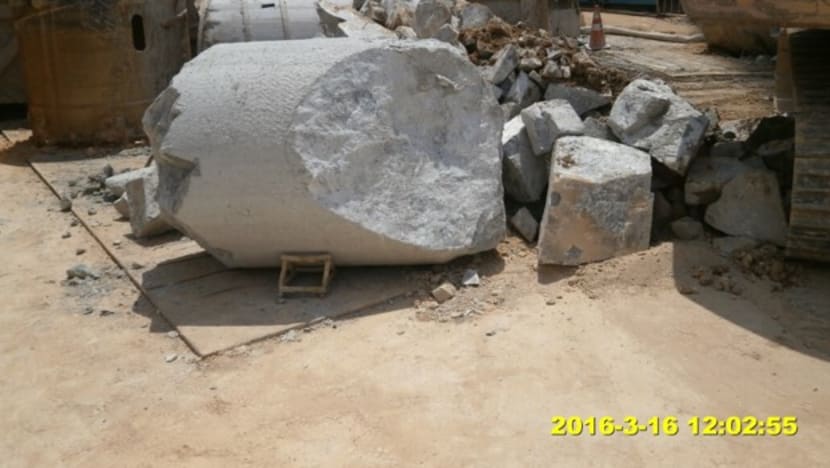
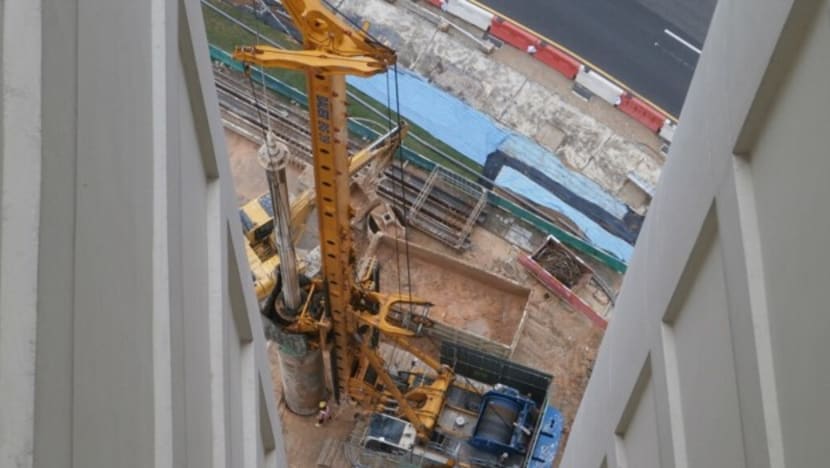
Other stations along the 13km stretch posed their own challenges.
For example, construction at Lentor station required working around major telecommunication cables as well as the diversion of a 1.2m-wide water pipe.
The presence of major utilities was also a challenge at the Upper Thomson station, where construction also required that an existing canal be diverted.
To reduce the disruption to traffic along Upper Thomson Road, which runs overhead, a method called pipe roofing was employed during the construction of a linkway at the station.
This method, previously employed on the Downtown Line, involved creating an underground canopy of interlocked steel pipes around the linkway
Micro tunnel-boring machines - similar to but significantly smaller than the regular ones used for MRT tunnelling - were deployed to tunnel through the ground to install the pipes.
There was only a small margin of error, with clearance space of only about a metre between the linkway and the bored train tunnels below.
Meanwhile, at Caldecott station, plans to use the cut-and-cover method for the construction of the tunnel - where a trench is excavated and then covered - were replaced with the use of a mined tunnel instead.
“We carried out mined tunnelling to construct the railway tunnels in mixed ground conditions - a mix of rock and soil. This was challenging due to the presence of more groundwater under such ground conditions and hence the soil might be weaker,” said Mr Foo.
The mined tunnelling method allowed construction work to continue underground, minimising the disruption to a service road leading to St. Joseph's Institution International school, he added.
The site in fact features Singapore’s largest mined tunnels, each measuring 13m high by 23m wide by 62m long, at a depth of 35m underground.
The use of electronic rock blasting also helped safely remove 160,000 cubic metres of rock safely.
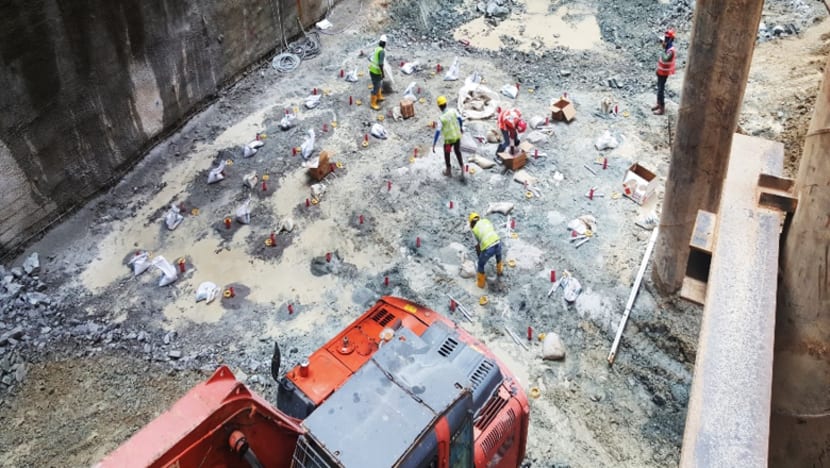
The LTA announced on Friday that it would hold a virtual open house to allow members of the public to view the six new stations on the line from Aug 23 to Aug 27, ahead of their opening, with details of the activities available on its Facebook page.
Originally scheduled to be operational by the end of last year, the opening of the second stage of the Thomson-East Coast Line was delayed due to the COVID-19 pandemic as well as a system review prompted by a line disruption at the end of last year.
Singapore’s sixth MRT line, the Thomson-East Coast Line is operated by SMRT, which won a S$1.7 billion contract to operate the line in 2017.
The entire 43km line - which will stretch from Woodlands to Sungei Bedok - was initially due to be fully operational in 2024, with an expected initial 500,000 daily commuters rising to about 1 million commuters in the longer term.
However, late last year the LTA said it expected completion delays of up to a year on various construction projects - including the Thomson-East Coast Line - resulting from the suspension of construction work during Singapore’s “circuit breaker” period.















